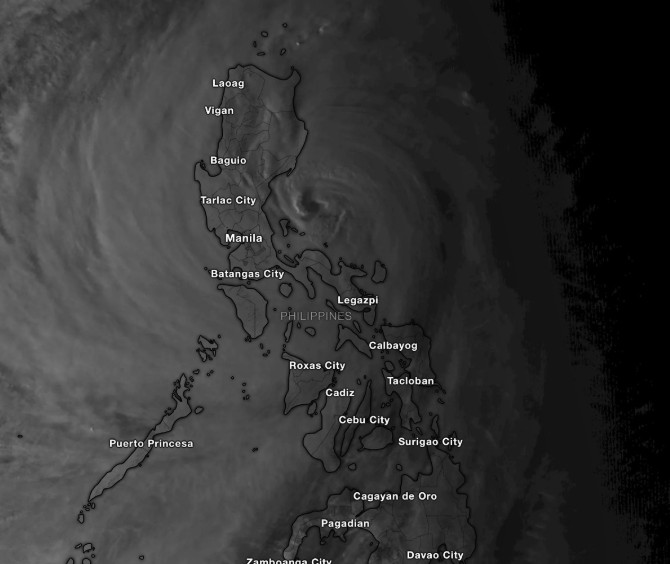A ruinous typhoon in the Philippines has left wide destruction, claiming at least four lives and forcing over 1.4 million residents from their homes.
Typhoon Fung-wong, locally known as Uwan, has now drifted down from the country’s northwestern seacoast after days of torrential rain, violent winds, and deadly landslides.
The super typhoon, which tore through the archipelago on Sunday night, made landfall in Aurora fiefdom, quilting sustained winds of over 185 km/ h (115 mph) and gusts reaching 230 km/ h (143 mph).
Entire communities were left without power as the massive storm, gauging roughly 1,800 kilometres, swept across northern Luzon, levelling homes and flooding municipalities before moving into the South China Sea.
“It was a long, punishing night,” said one resident from La Union, where roofs were torn off and roads were left impassable.
A Nation Already Reeling
The disaster struck just as the Philippines was scuffling with the fate of Typhoon Kalmaegi, which had claimed further than 224 lives in the week.
President Ferdinand Marcos Jr. has since declared a state of exigency, citing the reverse-to-reverse destruction caused by both storms.
Super Typhoon Uwan (Fung-wong) is battering Luzon, Philippines with peak winds of 215 km/h and gusts up to 230 km/h. #UwanPH
Over a million people have evacuated in Catanduanes, Camarines Sur, Aurora, and neighboring provinces, with Signal No. 5 hoisted.
Life-threatening storm… pic.twitter.com/wF1w33pOg9
— GeoTechWar (@geotechwar) November 9, 2025
Authorities say cataracts and landslides have destroyed at least 1,000 homes and submerged over 130 northern townlets.
In Catanduanes, a man drowned after flash cataracts swept through his neighbourhood, while in Eastern Samar, a woman was killed when her home collapsed.
Two children also failed when a landslide buried a family shack in the Nueva Vizcaya fiefdom, according to police.
Rescue and Relief Efforts Underway
“While the typhoon has passed, its rains still pose a danger in certain areas in northern Luzon, including in metropolitan Manila,” said Bernardo Rafaelito Alejandro IV of the Office of Civil Defence. “We’ll undertake today rescue, relief and disaster-response operations.”
The government confirmed that about 318,000 people remain in evacuation centres. Many others have sought shelter with relatives or in temporary camps. Roads blocked by debris are slowly being cleared as floodwaters subside.
Chaos in Transport and Daily Life
The storm’s impact has gurgled across the country. Further than 325 domestic and 61 transnational breakouts were cancelled, while over 6,600 passengers and crew members were stranded at anchorages after the Coast Guard banned vessels from leaving due to dangerous ocean conditions. seminaries and government services have also been ordered shut.
A Relentless Typhoon Season
The Philippines, hit by an normal of 20 tropical cyclones every year, remains one of the world’s most disaster-prone nations, positioned along both the Pacific typhoon belt and the Ring of Fire.
The country has not yet appealed for transnational aid, though Japan and the United States have reportedly expressed readiness to help in recovery sweats.
Experts advise that the increasing intensity of storms like Typhoon Fung-wong reflects the growing trouble of climate change in the Pacific region, where rising ocean temperatures are fuelling more intense and changeable rainfall systems.
For now, the focus remains on the survivors. Families huddled in evacuation centres clung to hope, staying for clear skies and the slow return to normal life.






